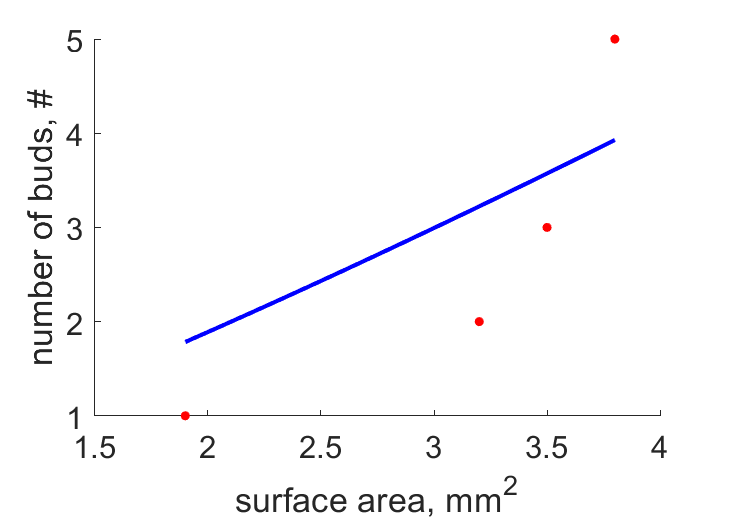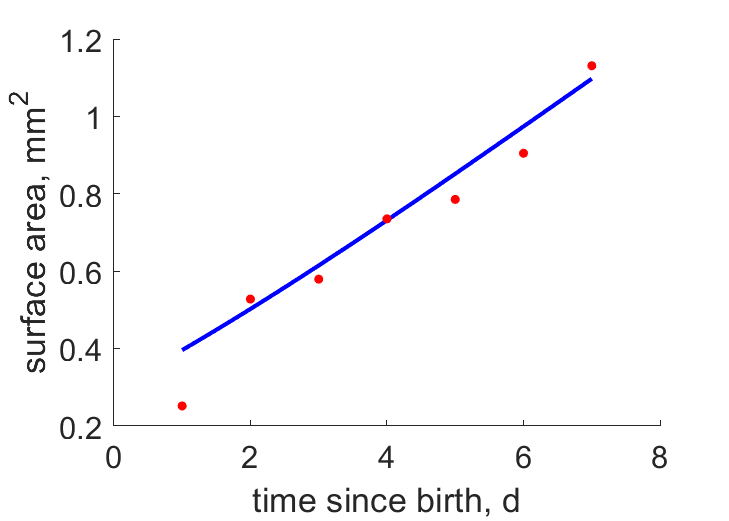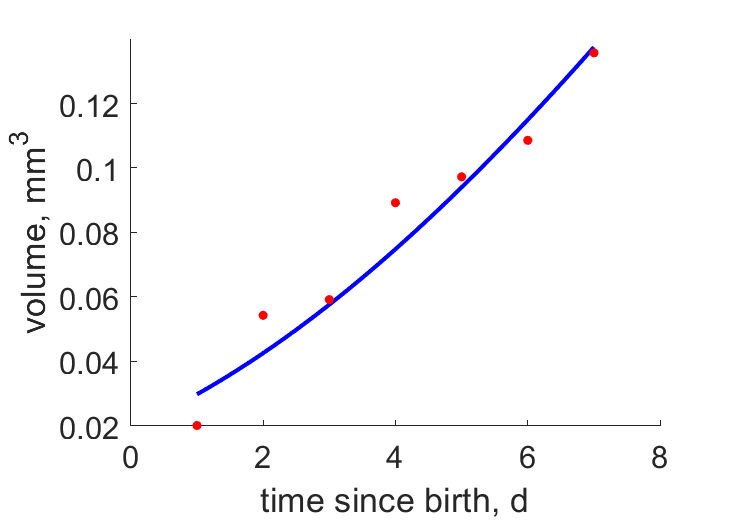Predictions & Data for this entry
| Model: stf | climate: Cfb, Dfb | migrate: | phylum: |
| COMPLETE = 2.5 | ecozone: TH | food: biP, biAa | class: |
| MRE = 0.068 | habitat: 0iFp, biFl | gender: Hh | order: |
| SMSE = 0.013 | embryo: Fc | reprod: Ob | family: |
Zero-variate data
| Data | Observed | Predicted | (RE) | Unit | Description | Reference |
|---|---|---|---|---|---|---|
| ab | 1.5 | 1.533 | (0.02194) | d | age at birth | MassRoch2008 |
| tp | 7 | 7.063 | (0.009049) | d | time since birth at puberty | MassRoch2008 |
| am | 2e+04 | 1.953e+04 | (0.02336) | d | life span | guess |
| Vb | 0.02 | 0.01938 | (0.03105) | mm^3 | volume at birth | MassRoch2008 |
| Vp | 0.14 | 0.139 | (0.007351) | mm^3 | volume at puberty | MassRoch2008 |
| Vi | 1.12 | 1.171 | (0.04513) | mm^3 | ultimate volume | MassRoch2008 |
| Ri | 3.333 | 3.179 | (0.0463) | #/d | maximum reprod rate | Kali2011 |
Uni- and bivariate data
| Data | Figure | Independent variable | Dependent variable | (RE) | Reference |
|---|---|---|---|---|---|
| AN |  | surface area | number of buds | (0.332) | Kali2011 |
| tAs |  | time since birth | surface area | (0.07692) | MassRoch2008 |
| tVs |  | time since birth | volume | (0.08642) | MassRoch2008 |
Pseudo-data at Tref = 20°C
| Data | Generalised animal | Hydra viridissima | Unit | Description |
|---|---|---|---|---|
| v | 0.02 | 0.04227 | cm/d | energy conductance |
| kap | 0.8 | 0.5926 | - | allocation fraction to soma |
| kap_R | 0.95 | 0.95 | - | reproduction efficiency |
| p_M | 18 | 125.7 | J/d.cm^3 | vol-spec som maint |
| k_J | 0.002 | 0.002 | 1/d | maturity maint rate coefficient |
| kap_G | 0.8 | 0.8008 | - | growth efficiency |
Discussion
- Aging at individual level hardly occurs, since cell differentiation is reversible
- A new bud is formed as soon as the earlier one steps off
- Bud is treated similar to foetus
- Reproduction efficiency kap_R has been set to 0.95/2 because the species is simultaneous hermaphroditic
Facts
- Medusa stage is absent in Hydra; this species is symbiontic with algae (Ref: Wiki)
Bibliography